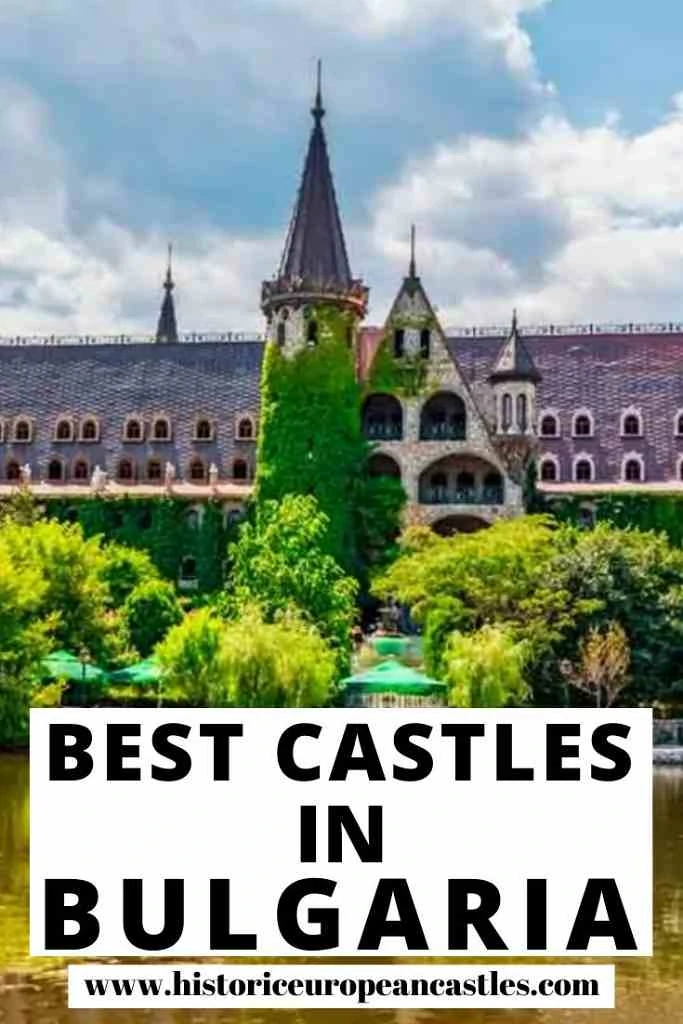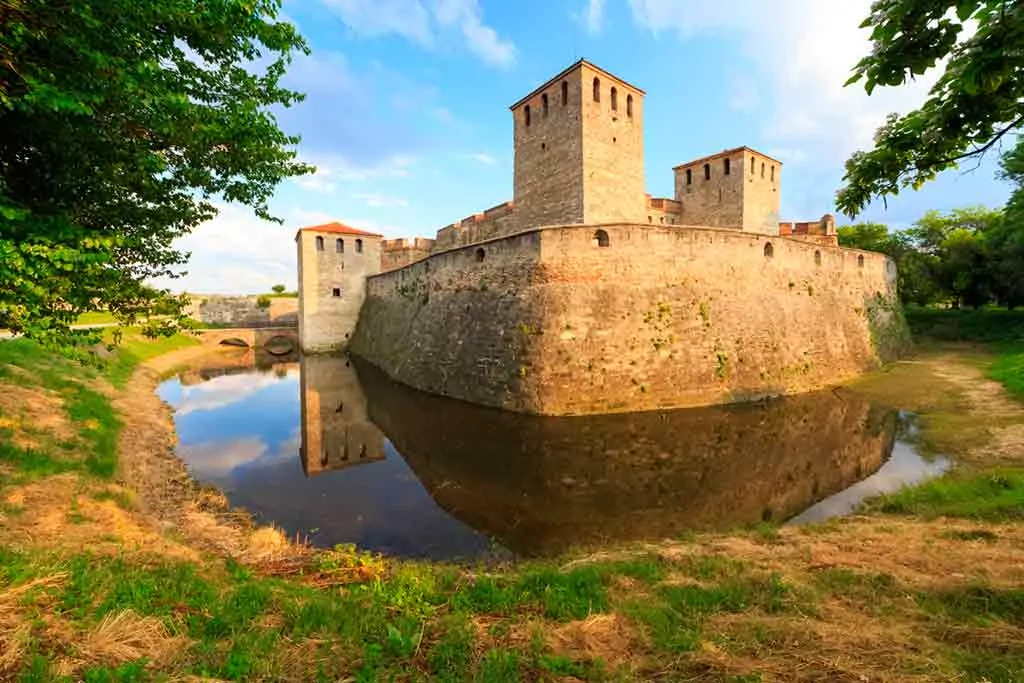Best Castles in Bulgaria
Technically speaking, Bulgaria doesn’t have castles, not like the castles found in Western Europe instead, they have strongholds – ancient fortresses so old that they date back to the times when the country was shaped by some of history’s most influential empires starting with the Thracian’s, and moving through Roman, Byzantine, and Ottoman times.
Located at the crossroads of East and West, North and South Bulgaria, of course, got caught up in countless bloody conflicts – The history might not be ‘nice’ but it certainly is interesting with the remains of these historic fortresses reminding us of all that this Eastern European country has endured.
If you prefer modern history over ancient history skip to the end of this list of the best castles in Bulgaria to concentrate on the grand former Royal Palaces and Bulgaria’s eccentric fairytale castle from the 20th century.
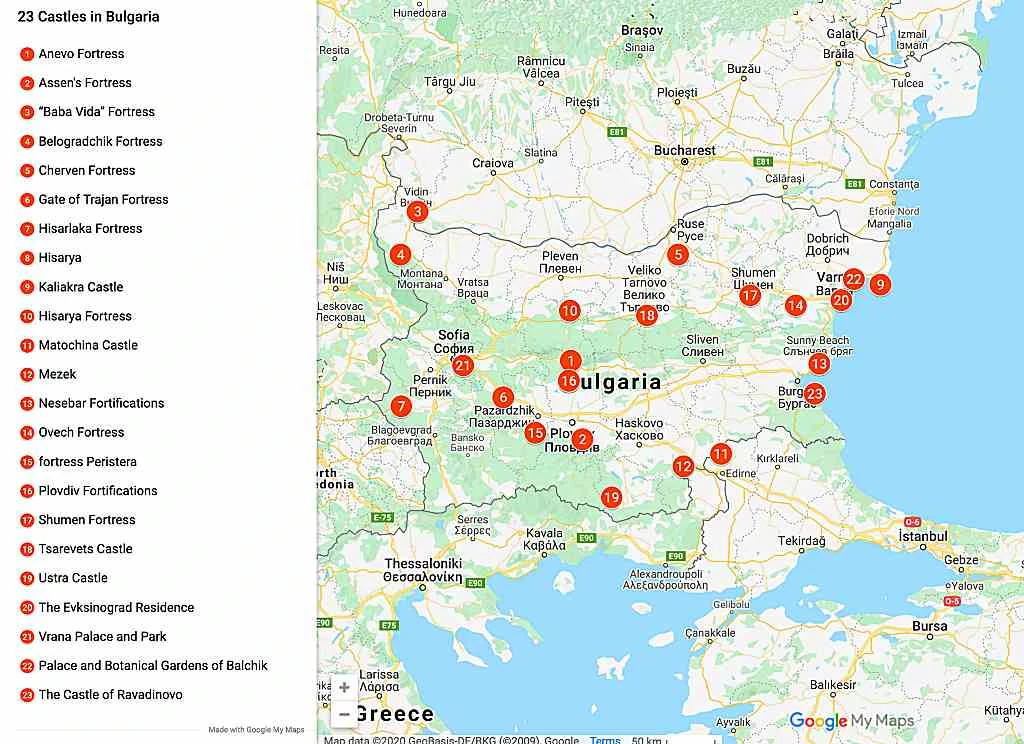
23 Castles to Visit in Bulgaria
1. Anevo Fortress Castle

Otherwise known as Kopsis Fortress, this is one of the best-preserved fortresses in the country with the 100 meters long west wall with 2 towers being the most intact today.
Excavations show that fortresses have stood on this site since at least the 3rd century, but the ruins of the fortress that remain today date from the time of the 2nd Bulgarian Kingdom when it served as a fortress for the noble brother’s Smilets, Voysil, and Radoslav.
Where: Anevo, Sopot, Plovdiv
When: 12th century
Open for visit: Yes.
2. Asen’s Fortress Castle

Located in the Rodopi mountains, this fortress takes its name from Tsar Ivan Asen II who was the ruler at the time of it being rebuilt in 1230, older fortresses having existed here since the 3rd century.
An administrative center with its own army, the fort had a turbulent past, controlled by the Thracians, Romans, Byzantines, Crusaders, Bulgarians, and lastly the Ottomans who destroyed everything but the beautiful brick church which can still be admired today.
Where: Asenovgrad, Plovdiv
When: 13th century
Open for visit: Yes.
3. Baba Vida Castle
Also known as Babini Vidini Kuli fortress, this is the only fully-preserved castle in the country and is also one of the oldest. Built on the ruins of the ancient town of Bononia, it was the home of the last Bulgarian King Ivan Sratsimir before Bulgaria fell under Ottoman rule.
Today, visitors can step inside two of the 8 castle towers, visit the prison where they’ll find weapons of torture, and take in the views from the castle walls.
Where: Vidin
When: 10th century
Open for visit: Yes.
4. Belogradchik Fortress
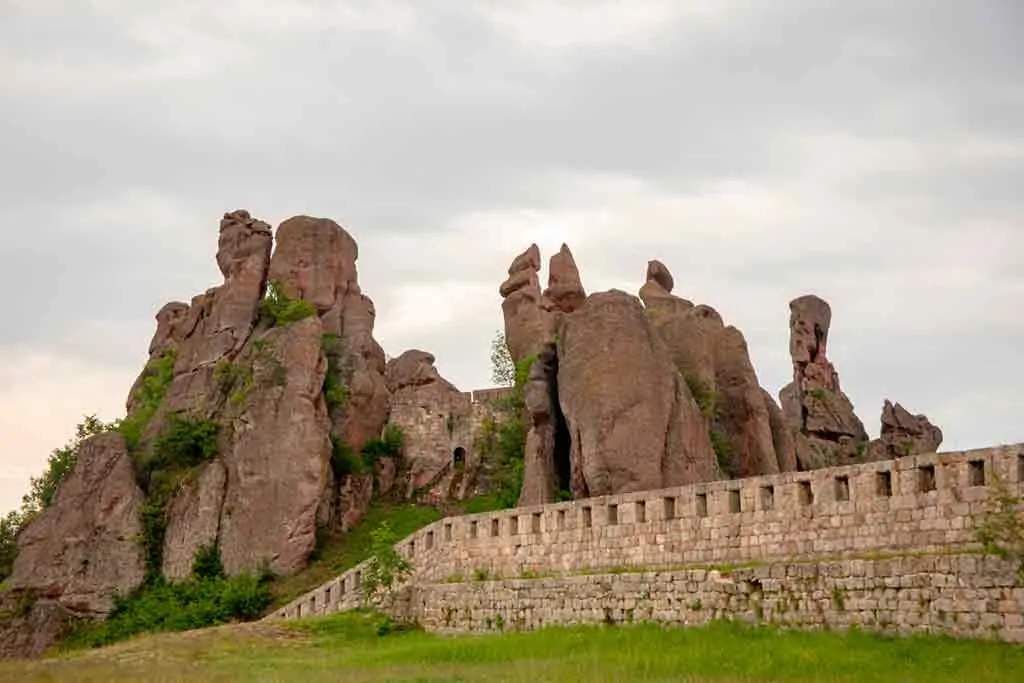
Otherwise known as Kaleto, this breathtaking ancient fortress which uses the natural rocky landscape formed 200 million years ago as some of its walls, is thought to date back to the Roman Empire with reinforced reconstruction happening in the 14h century when the Ottoman Empire was gaining in strength and again when the Ottoman Empire was in force.
More recently, in the 1885 Serbo-Bulgarian War, the fortress was used as a military site but today visitors can take in the astonishing sight with a walk around the 3 courtyards and defensive bunkers and can even climb up the rock using the rock stairs and wooden ladders.
Where: Belogradchik, Vidin
When: 3rd – 14th century
Open for visit: Yes
5. Cherven Fortress
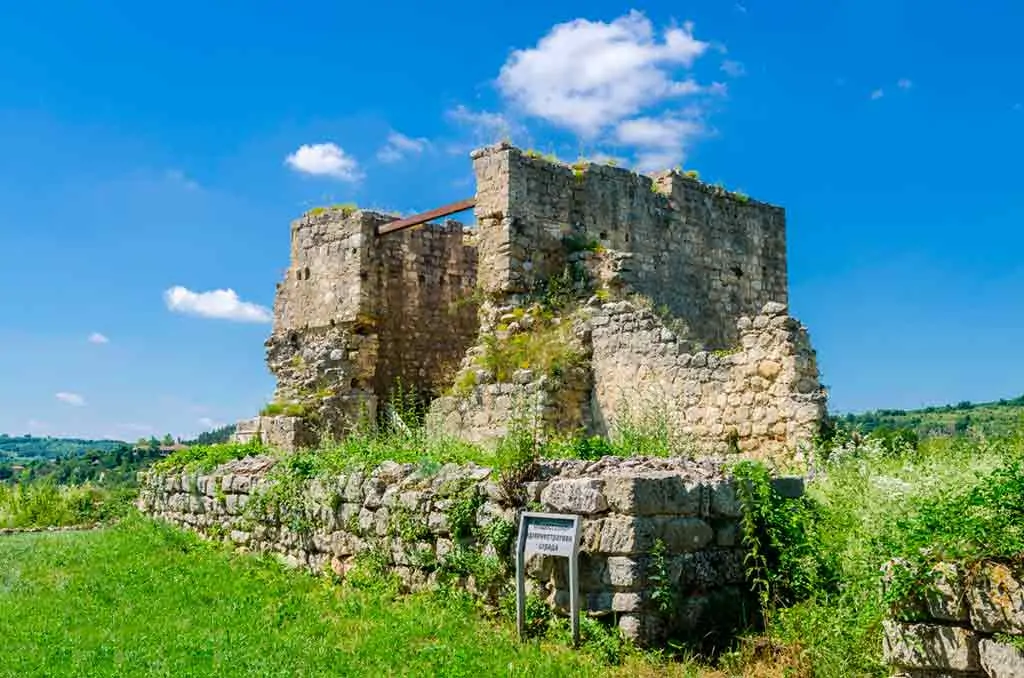
Established in the 6th century, Cherven fortress experienced its golden era between the 12th-14th centuries when it became a military, administrative, economic and cultural center for North-eastern Bulgaria.
Ransacked by the Ottoman Empire in 1388, all that remains intact of the citadel ruins today is the 14th century 12-meter tall tower but the views overlooking the canyon of the Cherni Lom River don’t disappoint either!
Where: Cherven, Pleven
When: 6th – 14th century
Open for visit: Yes.
6. Gate of Trajan Fortress
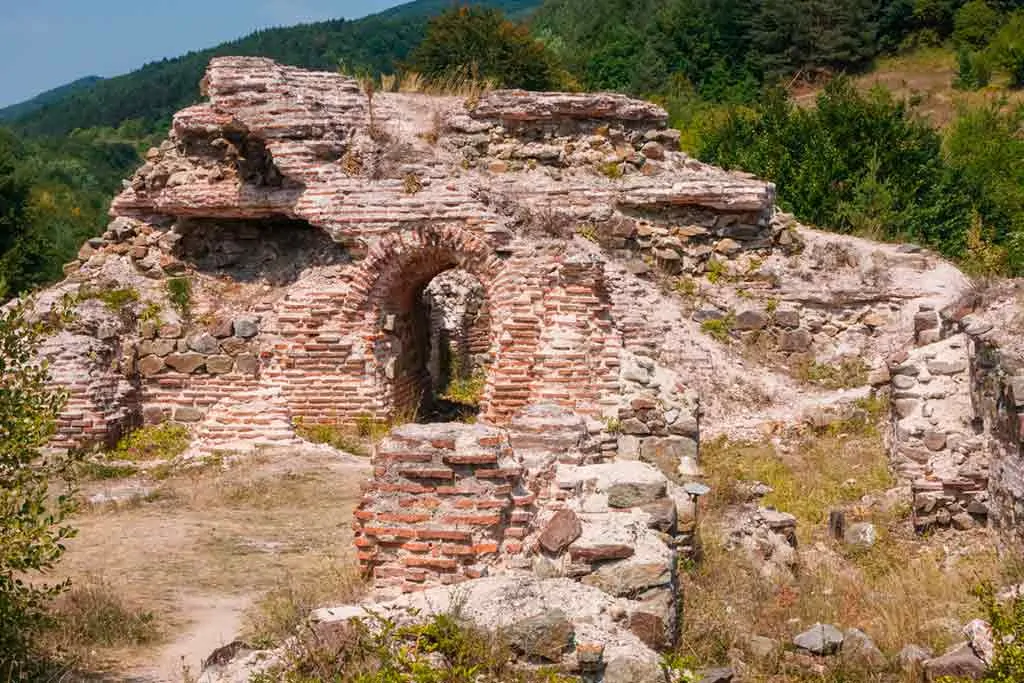
Named for the Roman Emperor Trajan who built a fortress here in what was Northwestern Thrace, this historic mountain pass on the Balkan peninsula is most well known for the Medieval battle that took place on 17th August 986 in which the forces of the Byzantine Emperor Basil II were stopped by Tsar Samuil of Bulgaria, effectively halting a Byzantine campaign in Bulgaria and enabling the country to expand its borders.
Learn the history of this site at the visitor’s center and enjoy the panoramic views as you wander around the fortress ruins and restored gate.
Where: Ihtiman, Sofia
When: 3rd – 15th century
Open for visit: Yes.
7. Hisarlaka Fortress
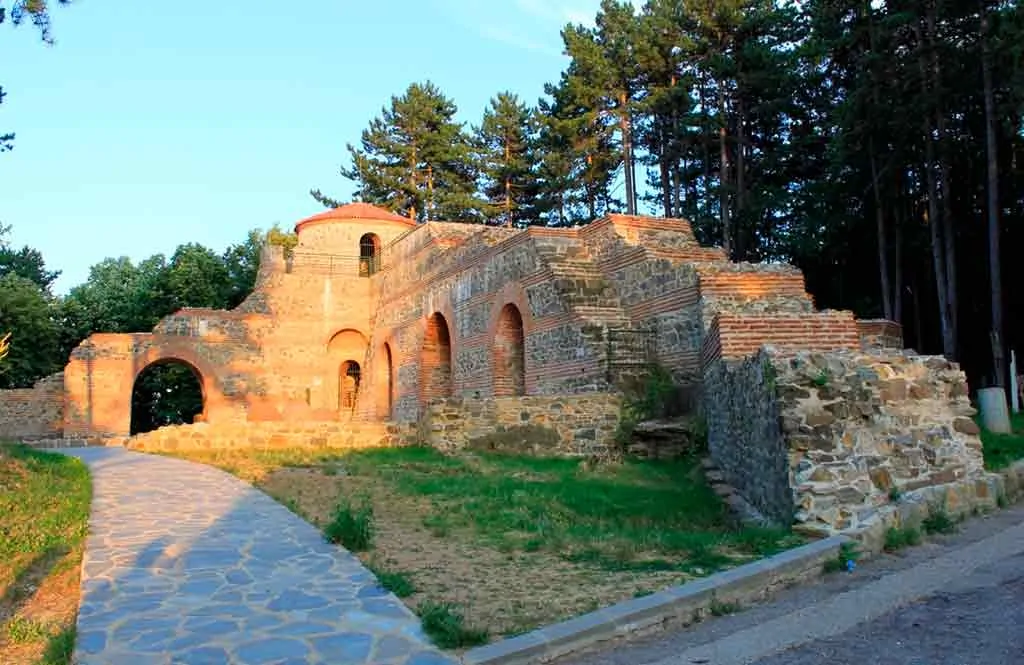
With a history dating back to the 5th century, the hilltop Hisrlaka fortress was rebuilt and expanded over the following centuries resulting in the 14 towered fortress remains that we see today.
It experienced a golden age through the first and second Bulgarian Kingdoms becoming a major administrative and religious center in the region but was destroyed in the 15th century by the Ottoman’s. Visitors today can enjoy a walk around the restored fortress with trails through the neighboring park.
Where: Hisarlaka, Kyustendil
When: 5th – 15th centuries
Open for visit: Yes.
8. Hisarya City Walls
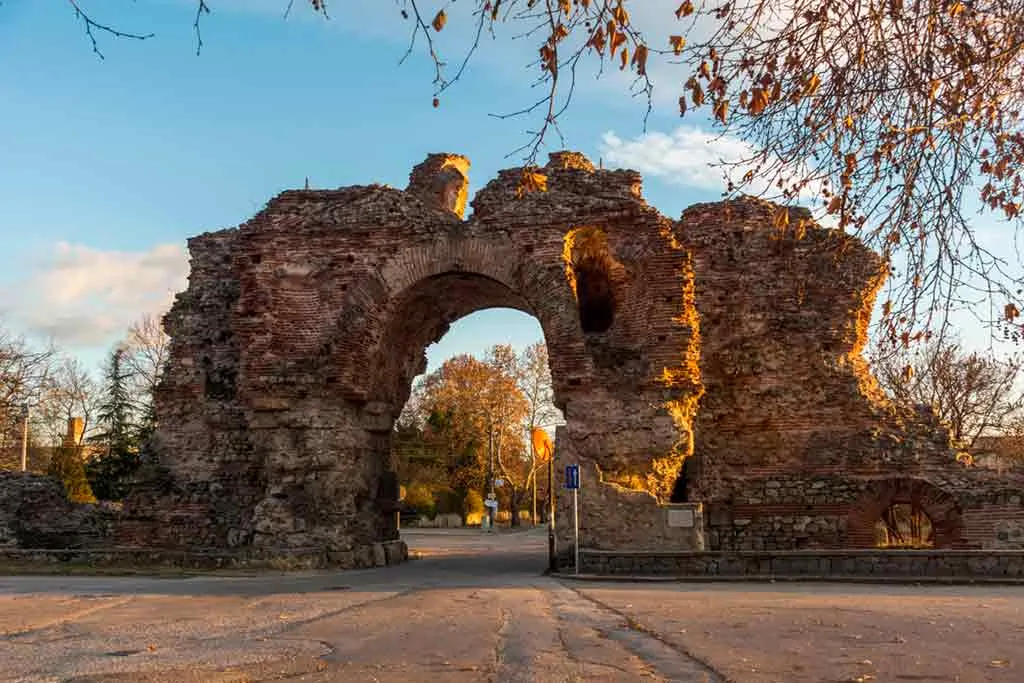
In 293AD this ancient spa resort with 22 mineral springs went from being a Roman town to a Roman city and was renamed Diocletianopolis after Emperor Diocletian. 2.3km long, 11-13 meter tall prestigious fortified city walls were built around the city with 4 gates.
The remains of these almost-intact 2,000-year-old walls can still be seen today, take a walk or cycle ride around the city to admire the architecture and the views being sure to stop at the iconic Kamilite Gates (Camels Gate) for some photos.
Where: Hisarya, Plovdiv
When: 2nd century
Open for visit: Accessible 24/7
9. Kaliakra Castle
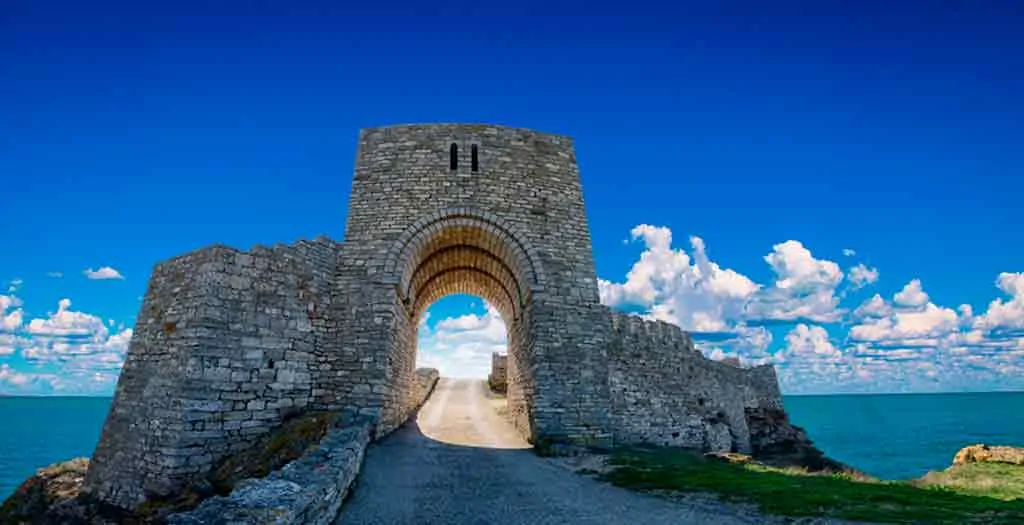
A fortress has stood on this picturesque cape since at least the 4th century when the Thracian tribe known as Tirizis named the fortress after themselves, the fortress not taking its modern-day name of Kaliakra (meaning Beautiful Cape) until the 13th century after many modification and restorations.
The fortress experienced a golden age in the second half of the 14th century when it became the capital of Karvuna. Today, visitors can see the ruins of the fortress walls, see the preserved 4th-century bathhouse, and a preserved vaulted mason tomb before entering the cave museum to view more historical finds from the fortress.
Where: Kavarna, Cape Kaliakra
When: 4th-14th century
Open for visit: Yes.
10. Lovech Fortress
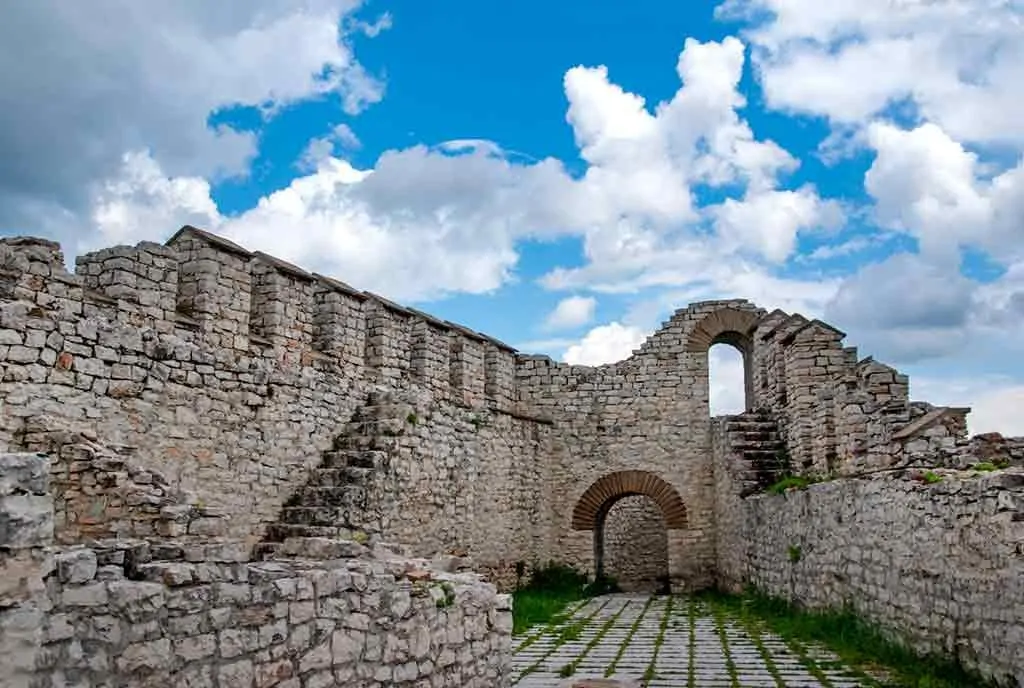
This ancient citadel, otherwise known as Hisarja (Hisarya) Fortress or Hissar Fortress, was built by the Romans during the First Bulgarian Empire though the site was inhabited since Neolithic times.
What we see today dates from the 10th century, the fortress being famous for the place where the 1187 Lovech Peace Treaty with the Byzantine Empire was signed marking the beginning of the Second Bulgarian Empire. During the later Ottoman takeover it was one of the last fortresses to be conquered, this not happening until 1446 when it became an important trade center.
Today, visitors can enjoy the view of Lovech Fortress lit up at night and go inside the castle grounds to learn more about its history.
Where: Lovech
When: 10th century
Open for visit: Yes.
11. Matochina Castle
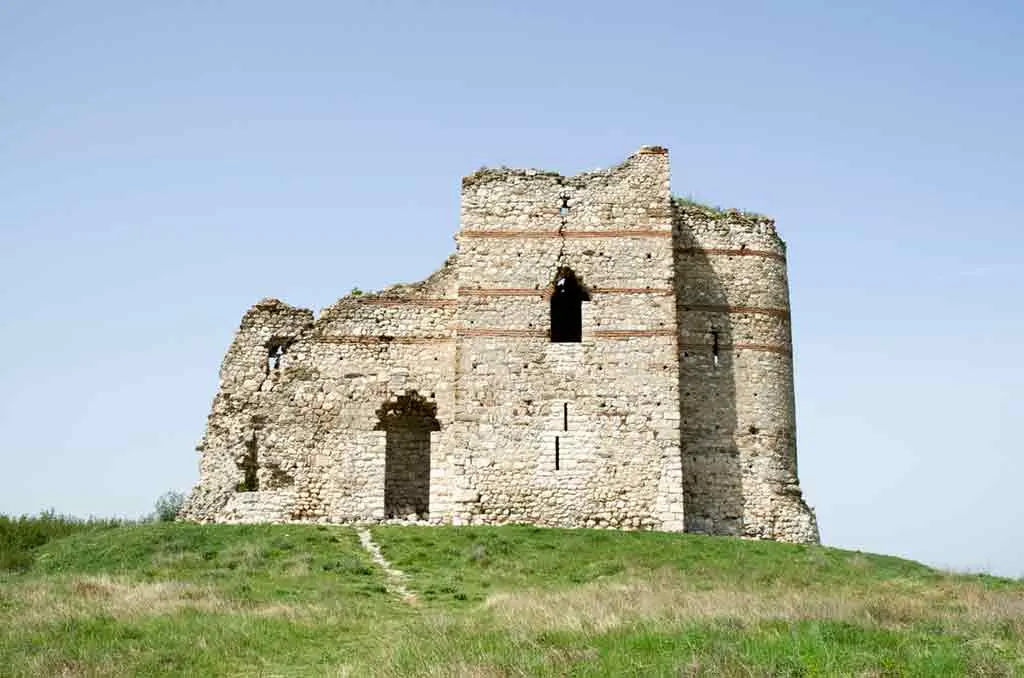
Better known as Bukeon fortress, the ruins of this cross-shaped fortress are an impressive sight located high on a hill above the village dating back to the 12th century though standing on the site of older fortifications.
Wander around the remains of the inner defensive tower and the fortified walls as you learn about the battles that took place here.
First, in the year 387 between the armies of the Roman Emperor Valens and the Goths resulting in the death of the Emperor and secondly, in 1205 when the army of tsar Kaloyan defeated the army of the knight-crusaders and captured Emperor Baldwin of Flanders.
Where: Matochina, Svilengrad, Haskovo
When: 12th-14th century
Open for visit: Yes, open 24/7
12. Mezek Castle
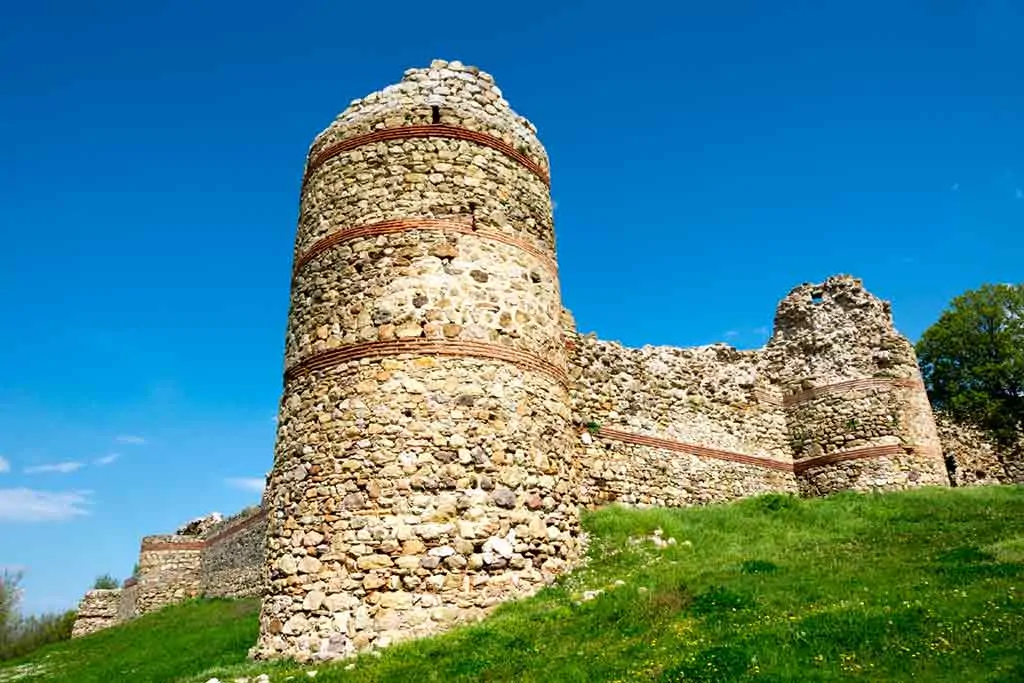
Surrounded on 3 sides by steep cliffs stand the remains of the medieval Byzantine border guarding fortress, which is the best-preserved fortress in the Rhodope mountain, dates back to the reign of Byzantine Emperor Alexius I Comnenus.
Some people believe that this is Neutzikon fortress, others think it is Versinikiya fortress where Khan Krum defeated the Byzantine army in 813AD but whichever you yourself decide, it’s a fascinating small castle to visit most well known today for its WWII bunkers
Where: Mezek, Svilengrad, Haskovo
When: 11th century
Open for visit: Yes, open 24/7
13. Nesebar Fortifications
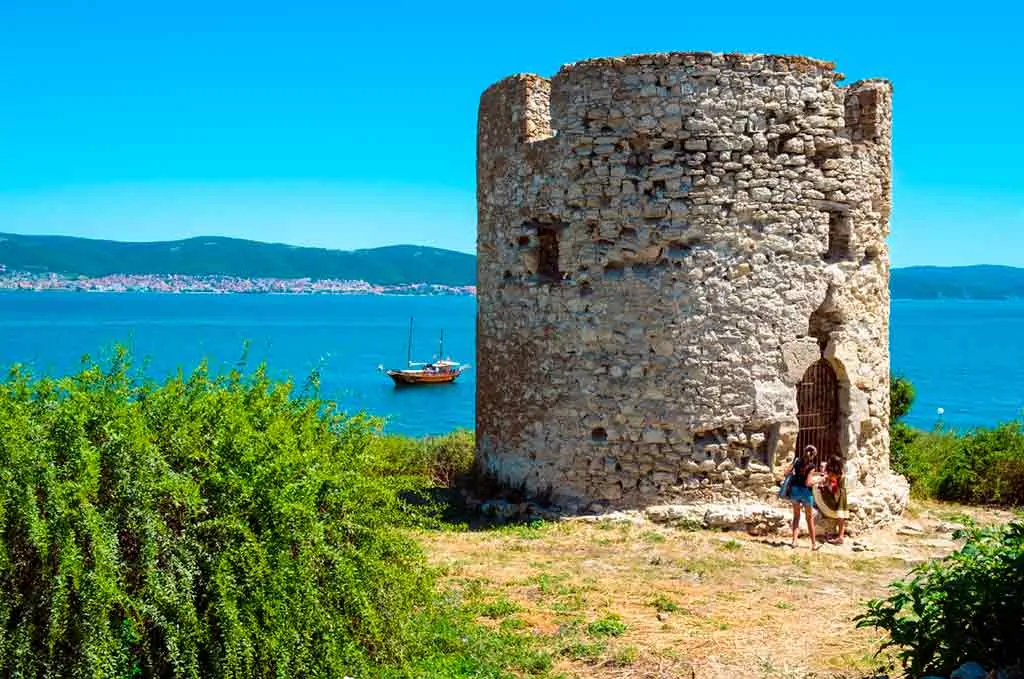
The remains of this 3,200-year-old Thracian settlement (originally known as Menebria) which later became a Greek colony in the 6th century (known as Messembria) can still be admired today as you walk around Nesebar Old Town.
The city has always been surrounded by city walls, the first walls built by the Thracians in the 8th century BC, and then improved and added to by the Greeks and then the Romans. Along with the fortifications you can still see the Hellenistic acropolis, a temple of Apollo, an agora.
Where: Neebar, Burgas
When: 8th century
Open for visit: Open 24/7
14. Ovech Fortress Castle
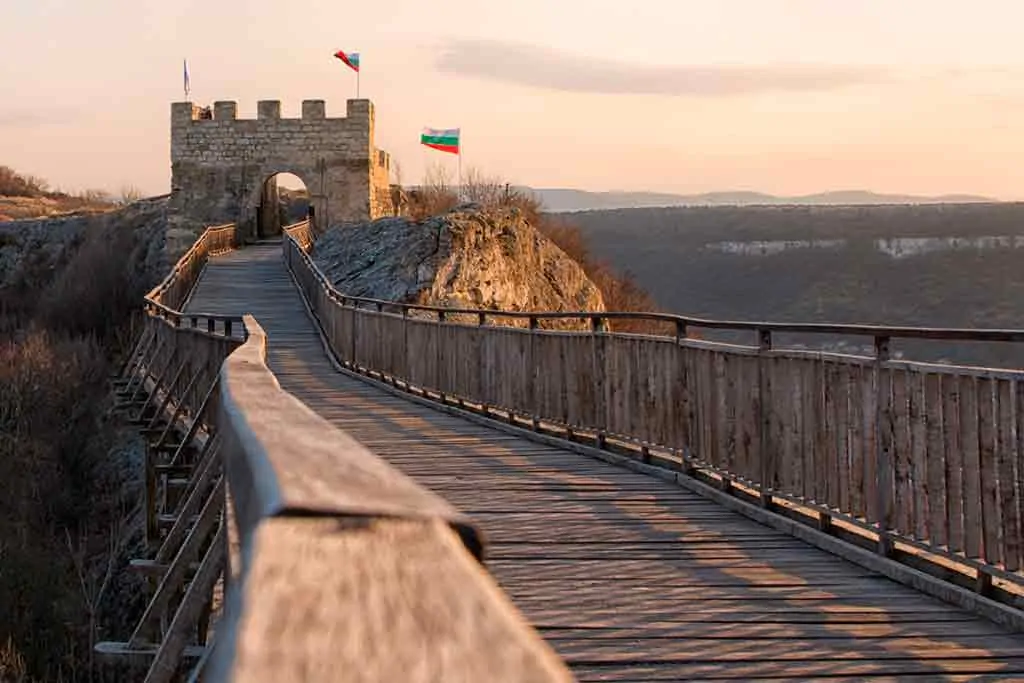
One of the oldest fortresses in the country, built by the Byzantines in the 4th century, the huge medieval fortress is known as Ovech sits on the Kaleto mountain plateau and is shaped like a ship.
An important administrative and cultural center during the First Bulgarian Empire, it became an important administrative and military center again during the Second Bulgarian Empire in the 14th century.
The fortress fell to the Ottomans in 1388 after a long siege, becoming an important commercial center in the 17th and 18th centuries.
Today, visitors can cross the bridge, admiring the rocky landscape around them, before entering the castle grounds to see the 79 meters deep well, the bishop’s church, the knight’s prison, the tower, and the Friars’ holes.
Where: Provadia, Varna
When: 4th century – 18th century
Open for visit: Yes.
15. Peristera Fortress Castle
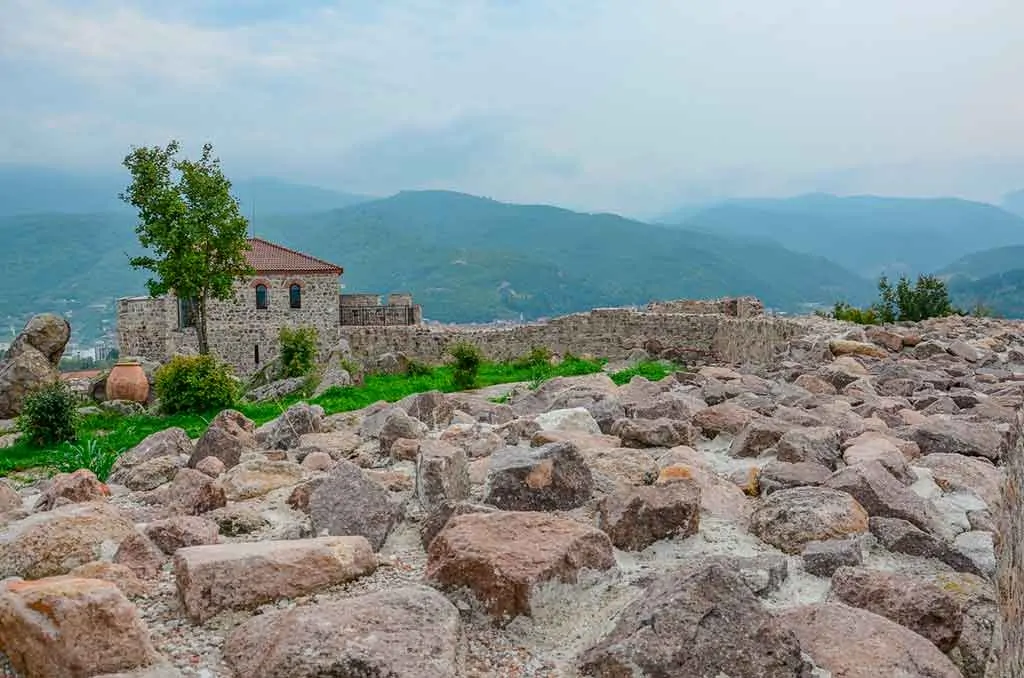
Situated on St. Petka Hill, the history of Peristera has been occupied since the Thracians built a sanctuary here, the remains of which can still be seen today.
Later, it became a citadel with a fortress that was enclosed by walls measuring 253 meters in length with 6 towers. Today the fortress has been fully restored and is a 4-star luxury hotel but visitors can wander around the grounds visiting the open-air museum and southern tower which has been turned into a museum.
Where: Peshtera, Pazardzhik
When: 4th century
Open for visit: Yes.
16. Plovdiv Fortifications
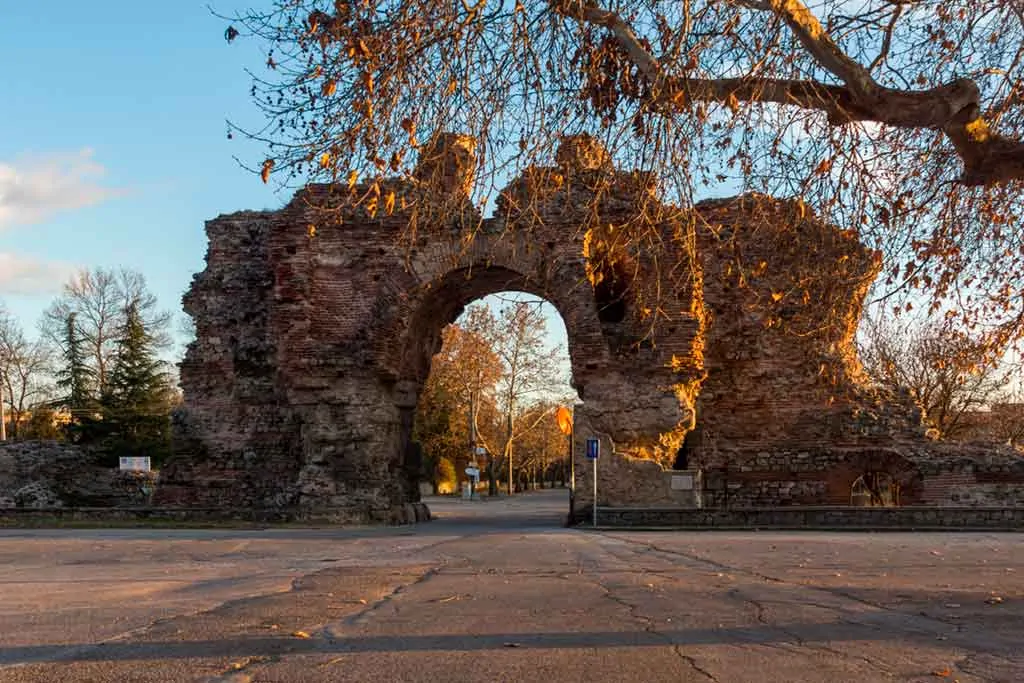
This ancient town is 8,000 years old and is the oldest continuously inhabited city in Europe. Though settled by Neolithic people, it was the Thracian’s who first built a fort here at which time they named the city Evmolpia.
But it has had many name changes over the centuries having been conquered by Philip II (father of Alexander the Great) who expanded and built walls around the city in the 2nd century. Later, the Romans, Slavic’s, Bulgarians, and Ottomans all conquered Plovdiv and left their mark.
The fortifications were built over 5 periods between the 4th century BC and the 7th century AD, fragments of the wall and towers can be seen from the north and north-western slopes of Nebet Tepe.
Where: Plovdiv
When: 4th century
Open for visit: Yes, open 24/7
17. Shumen Fortress Castle

Originally built by the Thracian’s some 3,000 years ago, making it one of the oldest fortresses in the country, Shumen fortress has been conquered and rebuilt and modified many times by the Romans, Byzantines, Bulgarians, and Ottomans.
It was an important stronghold during the First Bulgarian Empire and later, during the Second Bulgarian Empire, became an economic and cultural center of the state. Though looted and set on fire by the Ottomans, it wasn’t destroyed by them, as many other fortresses were, but by the crusaders who came in the 15th century.
An open-air museum today, visitors can trace the history of the fortress through the ages taking in all the ruins along with the reconstructed tower which offers breathtaking views.
Where: Shumen
When: 5th century
Open for visit: Yes;
18. Tsarevets Castle
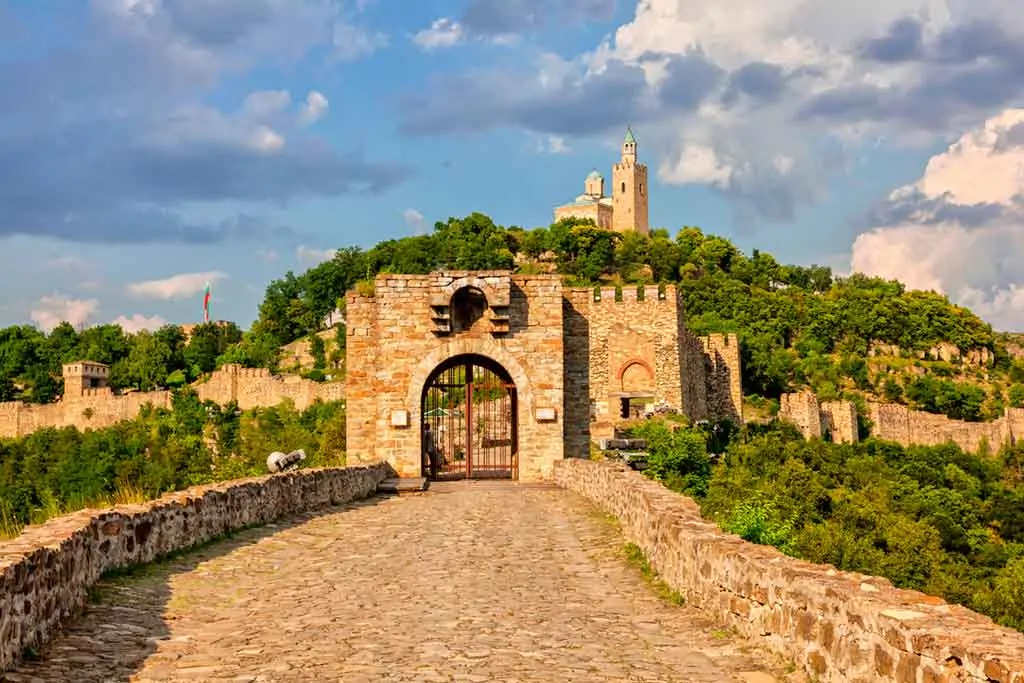
Tsarvets has been a fortified city since the 12th century when a Bulgar settlement was established here, prior to this Tsarvets was an important Byzantine city and settled since as far back as Neolithic times.
1,100 meter long walls surrounded the city which was the capital of the Second Bulgarian Kingdom containing a royal palace, 18 churches, and 400 houses.
The remains of the walls, palace, and the partially reconstructed fortress can be explored by visitors today as they take in the magnificent surrounding views.
Where: Tsarevets, Veliko Tarnovo
When: 12th century
Open for visit: Yes.
19. Ustra Castle
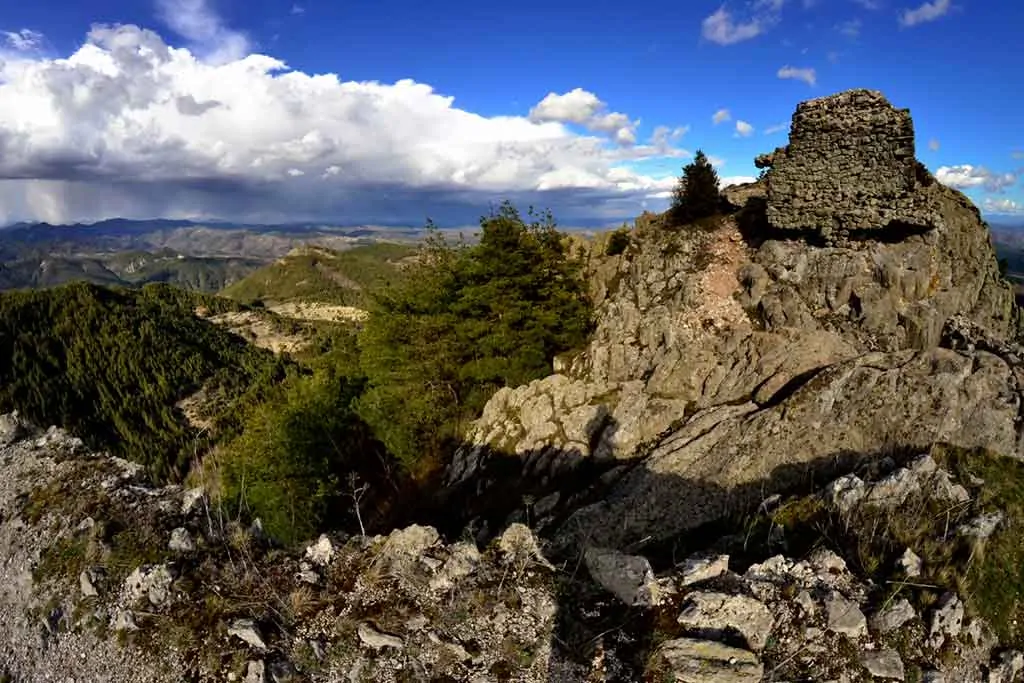
Thought to have been built during the reign of Constantine VII Porphyrogenitus to protect a trade route, the hilltop Ulstra fortress was conquered by the Byzantines and Bulgarians, changing hands back and forwards numerous times between the 12th – 14th centuries.
It lays in picturesque ruin today with the remains of the outer walls visible in the breathtaking landscape but was originally built in the shape of the letter П with 3 towers surrounded by strong walls. Take a hike up and enjoy the views!
Where: Ustren, Dzhebel
When: 10th century
Open for visit: Yes, open 24/7
20. The Evksinograd Residence
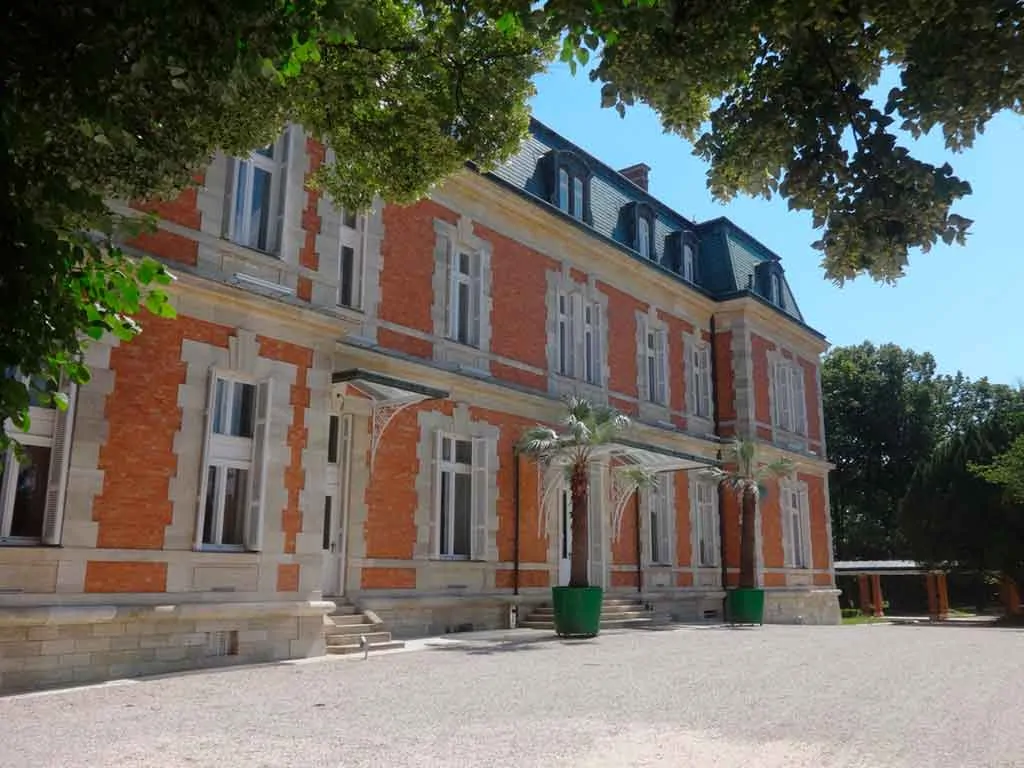
This Royal Summer Palace was built for Prince Battenberg on the site of the St Dimitar monastery between 1887-1900 and completed by Prince Ferdinand, with the addition of a French-style park containing rare tree species and a winery, after Batternberg’s death.
Today, the former royal palace is used as a governmental and presidential retreat for cabinet meetings. Take a guided tour inside the opulent palace and around the winery, chapel, and gardens noting the sundial that was gifted to Prince Ferdinand by Queen Victoria.
Where: Varna
When: 19th century
Open for visit: For pre-booked tours only. Check here for more information.
21. Vrana Palace and Park
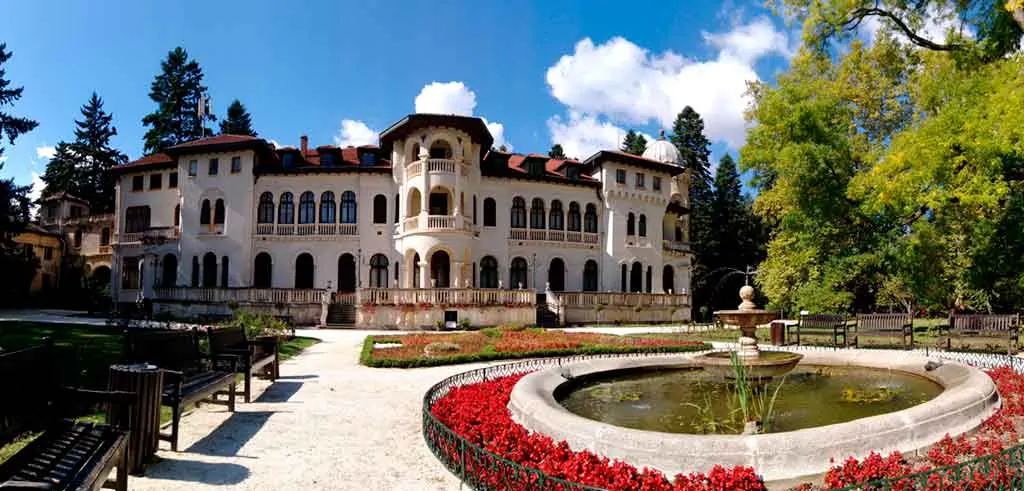
The former Summer Royal Palace of Vrana is still the official residence of former Tsar Simeon II of Bulgaria and his wife Margarita today.
Built for Ferdinand I in 1899, the palace (which is made up of a hunting villa, royal palace, garden, 4 lakes, greenhouse and stables – which originally housed Indian Elephants instead of horses!) sits on the former home of the Ottoman governor, Osman Pasha covering 3203 square meters.
The grounds also contain a wooden house used by Georgi Dimitrov, the first communist leader.
Where: Sofia
When: 20th century
Open for visit: Park access only.
22. Palace and Botanical Gardens of Balchik
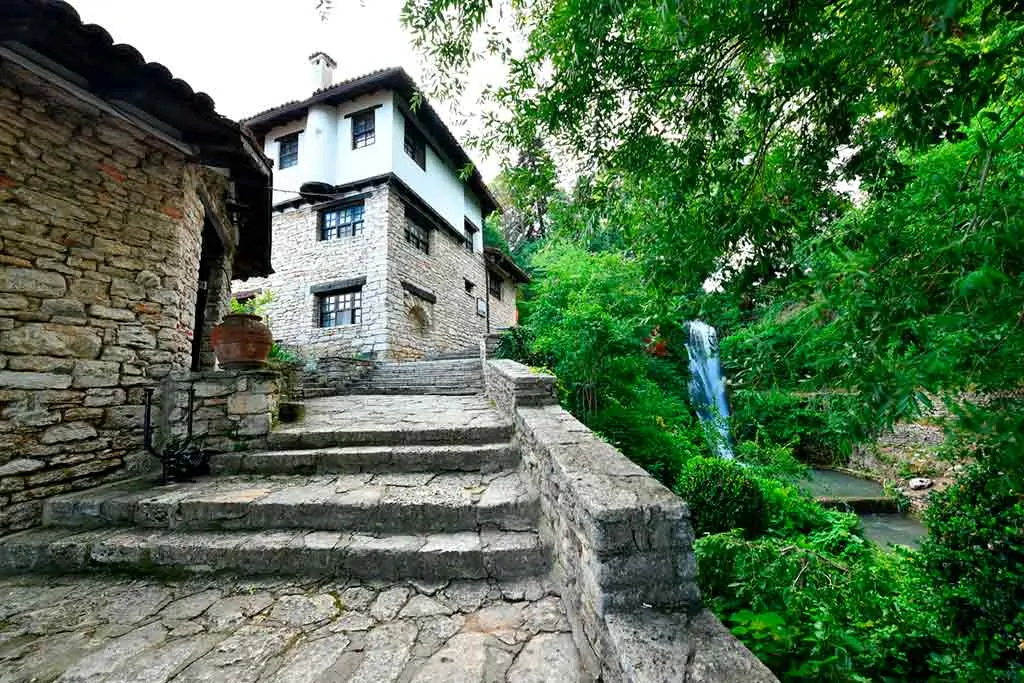
Built as a Summer residence for the Romanian Queen Maria Alexandrina Victoria de Edinburg between 1924-1936, (when Balchik was part of Romania) the eclectic Palace complex with gardens consists of the Queen’s Villa called Tenha Yuvah which translated as ‘solitary nest’, chapels, a nymphaeum surrounded by Moorish-styled patio’s, and a traditional Revival Period house with fountains plus 16-acre park which is now the University Botanical Garden containing more than 2,000 plant species.
Visitors can enjoy a tour around the palace interiors as well as explore the breathtaking grounds – A delight for any garden lover!
Where: Balchik, Dobrich
When: 20th century
Open for visit: Yes, check here for more information.
23. The Castle of Ravadinovo
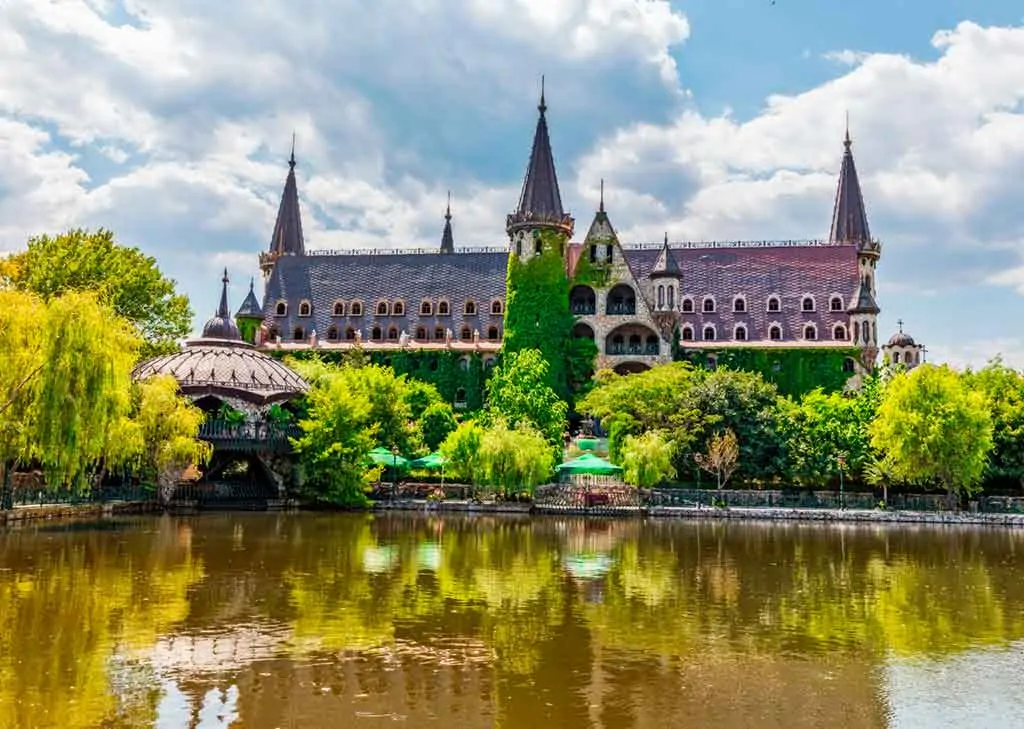
This unique fairytale-like castle, known as “The Castle In Love with the Wind” was the creation of eccentric millionaire Georgi Kostadinov Tumpalov who built it in just 20 years.
Bulgaria’s newest castle and also the most unusual and extravagant, Ravadinovo castle, which includes a small zoo, winery, summer cinema, art gallery, and escape room, is certainly a sight to behold that will enthrall the whole family – What it lacks for in history it makes up for in Disney-style charm!
Where: Ravadinovo, Sozopol, Burgas
When: 20th century
Open for visit: Yes, check here for more information.
PIN IT!
